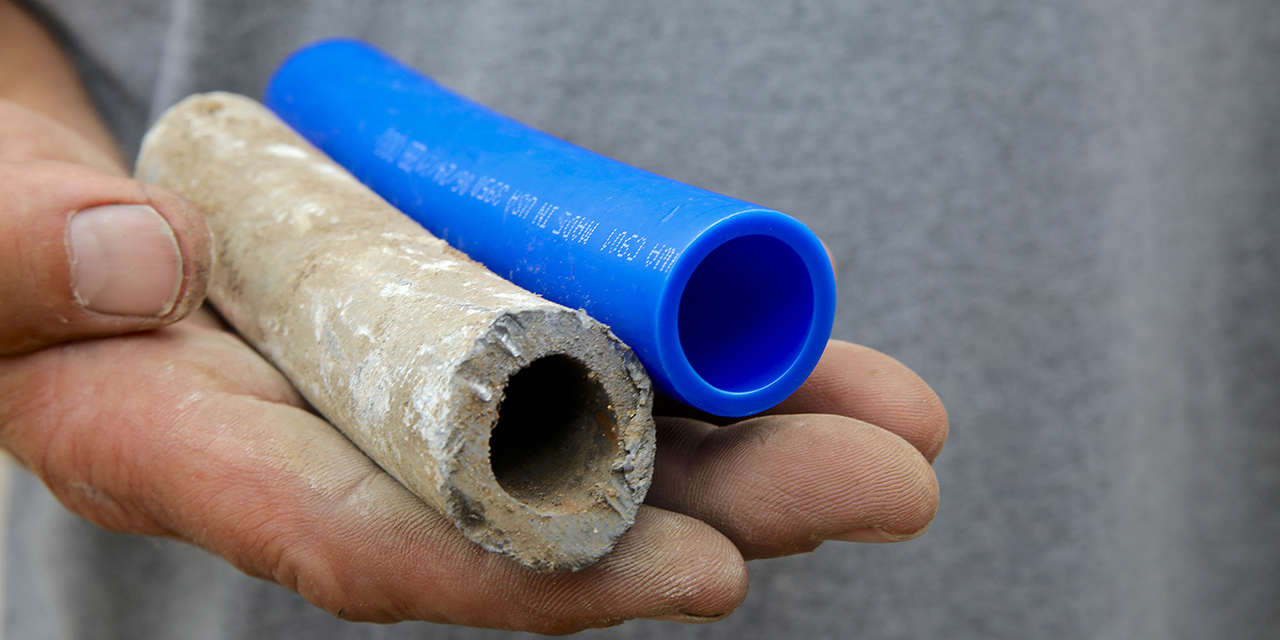Evaluating the dangers of lead service pipes to keep the community's drinking water safe
Although lead pipes are often thought of as relics of a bygone era, they are still a common component of water systems. Recent estimates indicate that up to 12.8 million homes in the U.S. are served by water systems with lead service lines, which are most common in older homes and infrastructure. In the past, lead was a common water service line material in building and water system projects because of its malleability, durability and resistance to corrosion. Also, lead pipes' resistance to pinhole leaks made them cheaper and easier to maintain than many other types of pipes. However, lead is now a known hazard in water supply systems. To combat this, steps are being taken across the country to replace lead service lines and reduce lead exposure.
This blog post will discuss the dangers of lead service lines, the legislative steps being taken to update lead pipe infrastructure and how communities can work with water engineers at Fehr Graham to create a comprehensive lead management plan.
Understanding the dangers of lead service lines in water systems
Lead pipes are a known risk because if they are disturbed and the scale is built up on the pipe surface, lead can leach into the water supply. It then accumulates in the bodies of people who drink the water. This poses particular danger to children, pregnant women and adults with preexisting conditions.
There are several ways to reduce lead in tap water, including:
- Using NSF/ANSI 523 and NSF/ANSI 42-compliant water filters to reduce lead and particulates in water. The state of Illinois requires these filters be provided by a community water supply for a lead water service line that has been affected by maintenance until it can be completely replaced.
- Running water for 45-60 seconds before using it if it's a known lead service line.
- Replacing lead service lines.
Support to replace lead service lines
At the national and local levels, there has been increased awareness of the need to eliminate lead service lines in water systems and to limit the danger posed by lead service lines. On the national level, the U.S. Environmental Protection Agency (EPA), has led the charge. Funding and regulatory support have made it easier and more feasible for communities to tackle challenges posed by lead service lines.
Funding support for reducing lead in drinking water
At the national level, eliminating lead service lines has become a major focus. The result has been increased funding for mitigation and service line replacement and stricter regulation and reporting requirements. Examples include:
- The Drinking and Wastewater Infrastructure Act, which dedicates $15 billion to lead service line replacement, and will be administered by State Revolving Fund (SRF) programs.
- The U.S. EPA's Lead Testing in School and Child Care Program Drinking Water Grant, which is a program that helps with testing for lead in drinking water at schools.
- The Water Infrastructure Improvements for the Nation (WIIN) Grant Program, which recently announced $20 million to reduce lead in drinking water.
Regulations on lead service lines
States such as Illinois, Michigan and New Jersey also have passed laws mandating complete lead service line replacement. Examples of recent changes include:
- The U.S. EPA's 2021 revision to the Federal Lead and Copper Rule, which enacts more stringent monitoring requirements.
- The Illinois Lead Service Line Replacement and Notification Act, which requires full replacement of lead drinking water pipes.
- Michigan's reformed Lead and Copper rule, which targets complete service line replacement by 2045.
- New Jersey P. L. 202, Chapter 183, which requires community water systems to replace lead service lines by 2031. It also requires identification and public notification of all lead service lines.
Overcoming lead service line challenges
Although lead service line replacement is a priority in many communities, it is also a complex process that can take years or even decades. To complete a service line replacement project, communities need to plan strategically.
For example, they can coordinate their lead service line replacement with other capital improvement plans. If you plan to replace a water main in the next few years, you can replace associated service lines as part of the main project.
The biggest challenges these projects face are often administrative. This includes:
- Record-keeping. Grants and regulators require accurate, comprehensive databases that track the presence of lead pipes in a community and replacement projects' progress. Communities must maintain a complete inventory of lead service lines and keep accurate records.
- Scheduling preconstruction inspections and construction with homeowners. Many lead pipes are in private residences, so homeowners need to give written permission for work to take place. This is especially complicated in rental properties where you need to get permission from the property owner and coordinate construction with the tenant.
- Grant and project management. Service line replacement projects are large and typically involve multiple partners and complicated funding stacks. Throughout the project, someone must keep track of all deadlines and reporting requirements and coordinate between parties.
Lead service line replacement is a major undertaking. An average replacement in an urban area can cost $8,000 to $15,000. Because of the financial, administrative and strategic challenges, communities often find they need help to successfully complete these projects .
Team with trusted water engineers to mitigate lead service line dangers
Service line replacement is a multiyear, community-wide endeavor that requires strategic planning. Fehr Graham can help with everything from funding and data collection to site supervision and water engineering.
The experienced team at Fehr Graham has managed projects to replace more than 1,000 service lines. We will work with your community to create a comprehensive plan to mitigate the dangers of lead service lines.
To learn more about how Fehr Graham's expertise in water engineering can help you manage the challenges of planning and replacing lead service lines, contact us or call 815.394.4700
Collaborative, Insightful, Results-Driven Solutions
Fehr Graham provides innovative engineering and environmental solutions to help improve the lives and communities of our customers.


